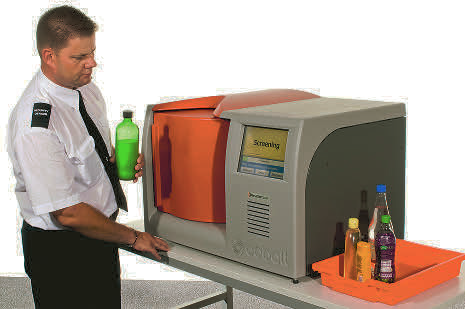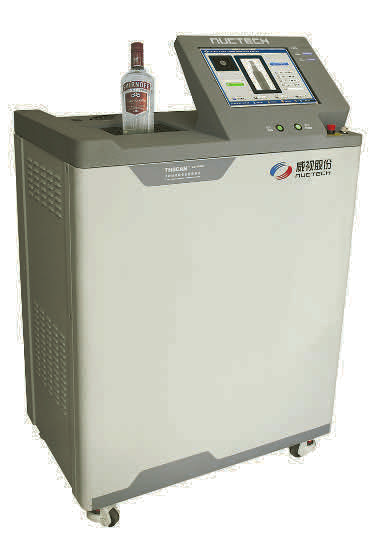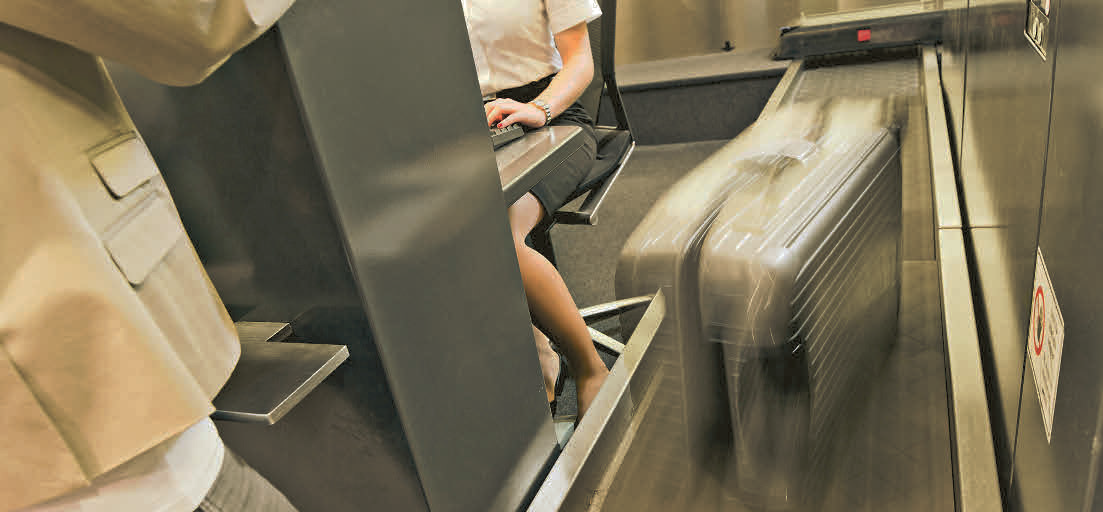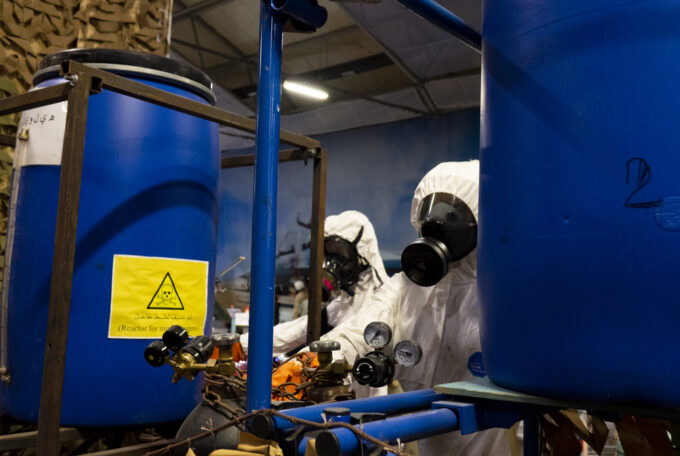Control systems at Zurich Airport
Every airport is defined by continuous security and safety measures. In January 2014, Zurich Airport introduced further baggage regulations. Peter Frei, Head of Safety & Security at Zurich Airport, explains how passenger security is to be standardized by means of new control systems.
The general perception is that hazardous materials are probably "odd substances" that only industry needs. Examples: Acids, alkalis, flammable or radioactive substances. Certainly, some domestic companies, such as only already a metal factory, work with poisons, gases, explosives and pyrotechnics.
However, many not harmless goods are left out by the mobile society. Indeed, according to a dossier from Scienceindustries (formerly the Swiss Society of Chemical Industries, SGCI), a variety of foodstuffs (UN 1197 Extracts, flavors, liquid), usually also artificial flavors and certainly spirits (UN 3065 Alcoholic beverages with more than 24 percent by volume), fall under dangerous goods.
Accordingly, not only could a canister full of methylated spirits and a match fall under a list of prohibited items, but also amaretti drizzled with grappa (minimum alcohol content: 37.5 percent by volume) or other concentrated specialty waters would by definition be dangerous goods.
Since 9/11 at the latest, security aspects of travel per se and baggage controls in particular have been tightened. Every now and then, therefore, airline passengers (see end of text) have to "let down their guard" at the security check: Gourmet products that are too liquid, exotic, unsealed luxury lines such as Chanel flacons or even lighters that are just too suspicious have to be "disposed of".
Time and again, however, travelers manage to board airplanes unpunished with a bottle carried in their pocket. Thus, despite all security measures and facilities with ultra-modern scanners, minor negligence apparently exists, not to mention targeted terrorism activities.
Peter Frei, Head of Safety & Security at Zurich Airport since November 2013, sees the complex but precise inspection of liquids as a non-negligible Achilles' heel in today's air traffic.

Control of critical goods
Swiss security specialists also admit: only after narrowly thwarted attacks or in response to disasters that have already occurred are more stringent control regulations established at airports.
It is only since December 2001, when Briton Richard Reid attempted to detonate explosives hidden in his shoes on a transatlantic flight from Paris to Miami, that business travelers with portly shoe soles, for example, have had to remove their shoes at the security check at Zurich Airport.
Not every passenger traveling through EU airports has to undergo such a procedure. However, according to the Zurich Airport Police, there are random checks along the security check at most airports. A certain percentage of travelers are screened by hand or with smaller scanners behind the metal detector, even without dangerous baggage.
Peter Frei: "We always have to identify what kind of item it is in a piece of luggage." Be it a small metal, be it a food item, the next thing you know, any container carried in your hand luggage can be scanned.
Tons of hazardous quantities are disposed of because of the controls. Insiders estimate the value of the "garbage" that pesters travelers and airport operators alike at Kloten because of the liquid regulations to be millions of Swiss francs nihilated every month. For a more accurate comparison, one would have to bring in and analyze the waste volumes of past years.

The waste, including the share of recyclable materials (recyclable), weighed total:
- 2006: 15,100 tons, of which materials 26 percent
- 2007: 13,800 tons, of which materials 41 percent
- 2013: 17,300 tons, of which materials 44 percent
Actual waste quantities of liquids:
- 2007: 340 tons
- 2013: 240 tons
Modern detectors are therefore now supposed to reliably screen specific liquids, save waste disposal costs - and incidentally speed up checks after check-in. The fact is: In every washroom, there are various products that contain substances that can probably be defined as hazardous materials. And it doesn't have to be a spray can with a pressurized gas package; some tiny hygiene product could easily be tampered with. It's also a fact that the leisure industry is virtually dominated by items such as smartphones, which also pose potential hazards to the environment. Lithium-ion batteries, for example, can explode when exposed to high heat or force.
There are no end of sources of danger. Who is in charge of the laws and future measures to be taken against dangerous goods? On the one hand, there is the "Regulation (EC No. 300/2008) of the European Parliament and of the Council" of March 11, 2008, and on the other hand, there are ongoing amendments by IATA, the "International Air Transport Association" based in Montreal, Canada. Both revolve around common regulations for air operators at national and international level.
In Switzerland, DETEC and FOCA regulate their own legal requirements regarding passenger freedoms and rights, certainly also regarding danger restrictions. Ultimately, the Federal Office of Civil Aviation (FOCA) defines that, for example, highly flammable substances such as fireworks have no place in the hand luggage of Mr. and Mrs. Swiss, while a balloon blown up somewhere may nevertheless be released for Swiss air traffic. Complex rules dominate the security checks at Zurich, Basel and Geneva airports. Undercover investigators are always on duty. Moreover, in addition to detectors and liquid scanners, Zurich Airport Security uses highly efficient narcotics-sniffing dogs in the fight against clandestine operations, not least smugglers.

New control units
At Zurich Airport, there are 26 security checkpoint lines in the central security checkpoint building and 16 additional security checkpoints in the transfer area.
Zurich Airport will probably conduct another series of tests with security scanners this fall after 2010. Whether security scanners such as the ion mobility spectrometer will be used in the future depends, among other things, on tests and regulatory requirements.
The Zurich airport operator, it says in a written statement, is closely monitoring developments in the market and discussions at the international level. Flughafen Zürich AG is therefore also conducting test series with various devices this year. These tests serve to check the property of the devices and the efficiency of the processes and to optimize them if necessary. In 2013, a test series was carried out with Liquid Explosive Detection Systems (LEDS).
In the course of implementing the new guidelines for the control of liquids, the following were
26 Type B devices were procured (these scan an unopened bottle, for example, but only one bottle can be checked at a time).
New liquid scanners
What kind of such scanners will be used at Zurich Airport is still an open question. However, it could well be a so-called ion mobility spectrometer.
In addition to the usual detectors, security units will in the future work with liquid scanners for separate follow-up checks. Cobalt insight 100 spectrometers are used in EU airports such as Amsterdam Schiphol or Heathrow London. The patented SORS technology allows fast and accurate analysis of chemical substances in unopened, non-metallic bottles or in containers, checking not only liquids but also gels and powders.
The Insight 100 system developed for this purpose is a compact "test station" for spectral security checks at airports, administrative buildings or other hubs requiring protection. The detection rate is very high. False alarms go below <0.5% (Loeffen, P.W. et al, proc. SPIE, 2011). Insight 100 is a so-called ECAC Type B Standard 3 Liquid Explosive Detection System (LEDS) RapID.









